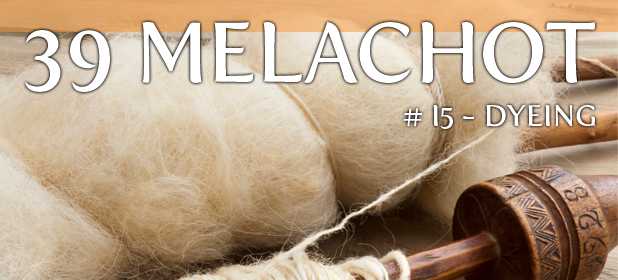After combing out the wool, but prior to spinning it to thread, the material was dyed. The coverings of the Tabernacle were dyed by dipping them into various colored solutions; changing or enhancing an object’s color is the melacha of tzovei’ah.
 A permanent dye is prohibited Biblically; temporary coloring is prohibited rabbinically. Examples of temporary coloring are mugs that change color when hot water is added and certain types of make-up, such as eye shadow and rouge. Cosmetics of a longer-lasting nature, such as nail polish, may present issues of tzovei’ah on a Biblical level. (Clear nail polish is also prohibited because it still enhances the appearance of the nails.)
A permanent dye is prohibited Biblically; temporary coloring is prohibited rabbinically. Examples of temporary coloring are mugs that change color when hot water is added and certain types of make-up, such as eye shadow and rouge. Cosmetics of a longer-lasting nature, such as nail polish, may present issues of tzovei’ah on a Biblical level. (Clear nail polish is also prohibited because it still enhances the appearance of the nails.)
The incidental coloring of food, such as occurs when instant coffee is stirred into a cup of hot water, is permitted on Shabbos under a general rule that dyeing does not apply to food items. (Even so, there are those authorities who require that the water be added to the coffee, not the other way around. In this way, the coffee is diluted by the addition of the water rather than the water being colored by the addition of the coffee.) It is questionable whether this exemption also applies to food coloring for decorative purposes, so it would be advisable to avoid that situation.
Painting or coloring is prohibited because of tzovei’ah. Writing, though it dyes the paper, is a different melacha (called koseiv), as the purpose is to create a symbol rather than to enhance the writing surface.
This is just an introduction to the concepts of the melacha of tzovei’ah; it is not a substitute for a full study of the halachos.
